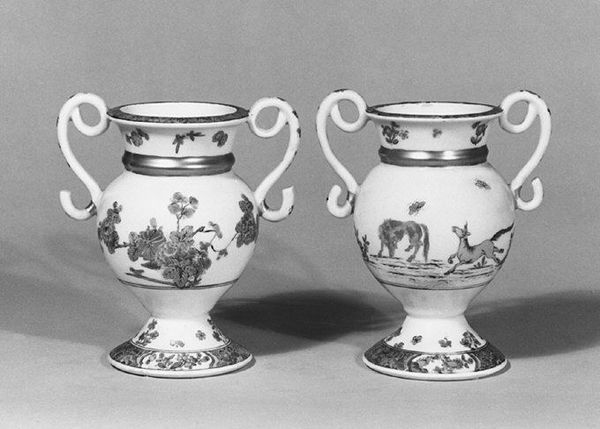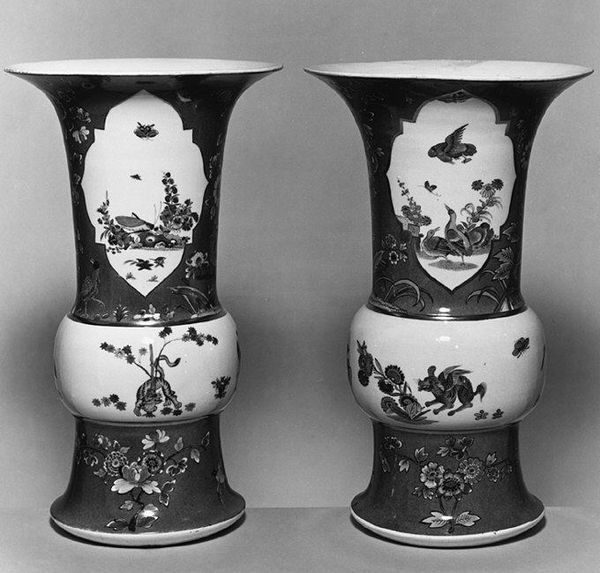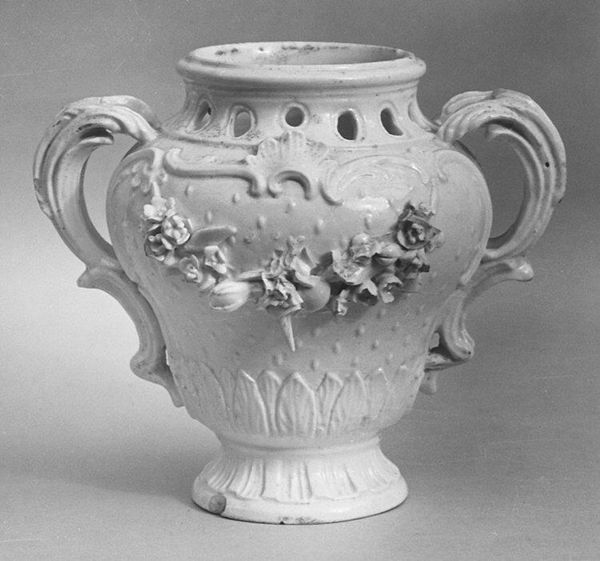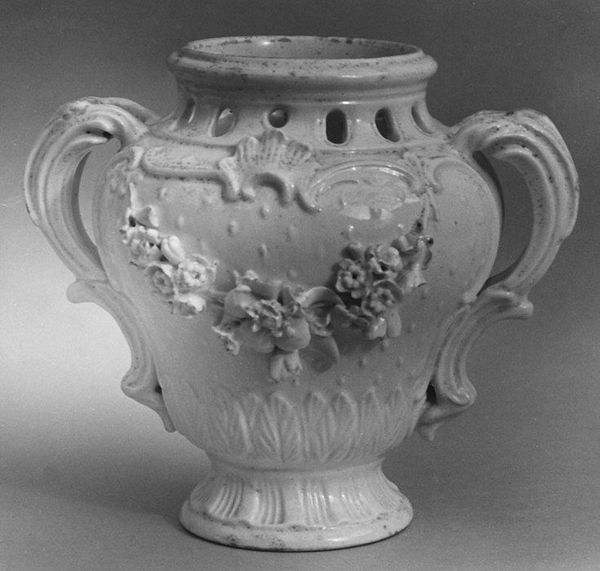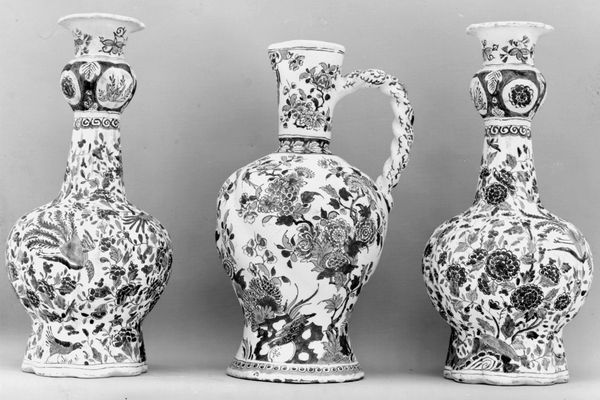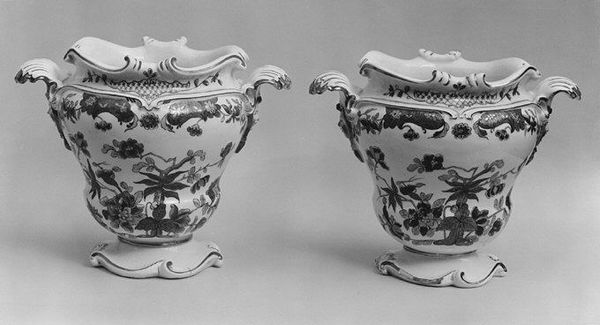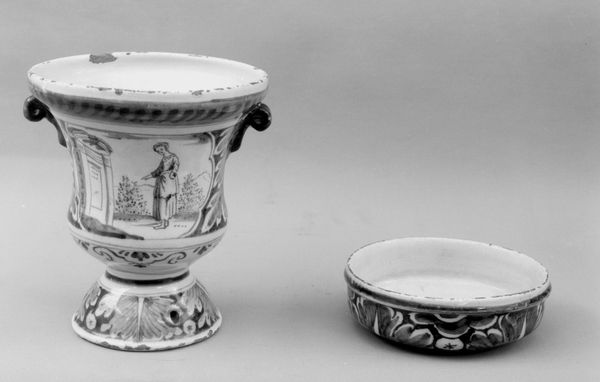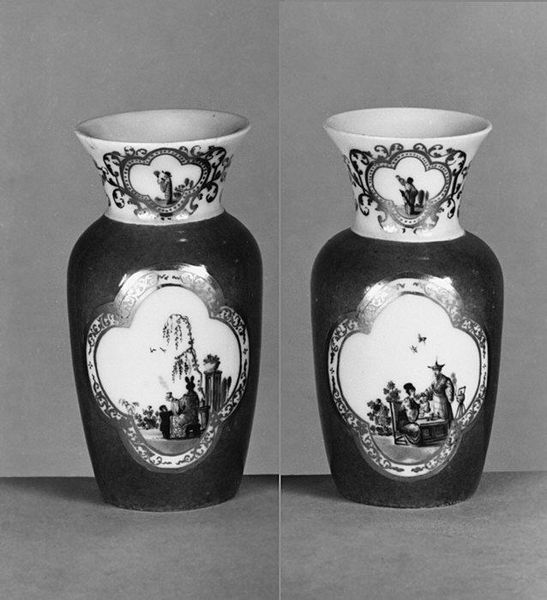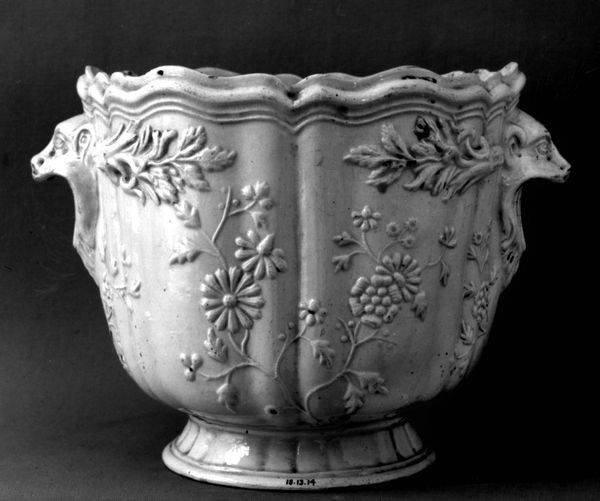
ceramic, porcelain, sculpture
#
neoclacissism
#
ceramic
#
flower
#
porcelain
#
sculpture
#
decorative-art
Dimensions: Height (.42): 7 1/2 in. (19.1 cm); Height (.43): 7 11/16 in. (19.5 cm)
Copyright: Public Domain
Curator: Here we have a pair of porcelain vases, dating from between 1795 and 1805. They're currently housed here at the Metropolitan Museum of Art. Editor: They strike me as immediately graceful, although somewhat muted given the delicate floral design. It’s an odd juxtaposition. Curator: They were produced at La Courtille, a porcelain manufactory located near the Montmartre district in Paris, active around the time of the French Revolution. We can clearly see the application of neoclassical aesthetics, though the actual manufacturing of porcelain, the craft itself, was still very much rooted in older traditions, including heavy reliance on division of labor. Editor: Interesting, because those florals - roses and scattered clovers if I'm seeing right - speak of more than simple decoration. In some traditions, roses can signify love, secrecy, beauty… and clover for luck. Did these convey messages within the home? Curator: Perhaps. These would certainly have been prized objects, likely displayed prominently within a domestic space. The cost of materials alone, like the high-fired porcelain, would indicate considerable wealth, revealing consumption practices within elite circles in post-revolutionary France. Editor: And the handles, formed as the heads of classically rendered women… I see a clear connection with ideas of feminine virtue and ideals in this moment. Though, strangely without the robust symbolism often found in other forms of decorative art. Curator: I think focusing on that intersection between mass-produced goods and classically inspired, even nostalgic motifs, tells a story. Editor: It is true; the very form mimics ancient Greek amphora shapes, alluding to heritage while containing perhaps the fleeting beauty of cut flowers. Curator: Ultimately, it is a complex object. Appreciating both its ornamental symbolism and its historical context really adds to its richness, though. Editor: I agree. Seeing both intention and implication enlivens history.
Comments
No comments
Be the first to comment and join the conversation on the ultimate creative platform.

